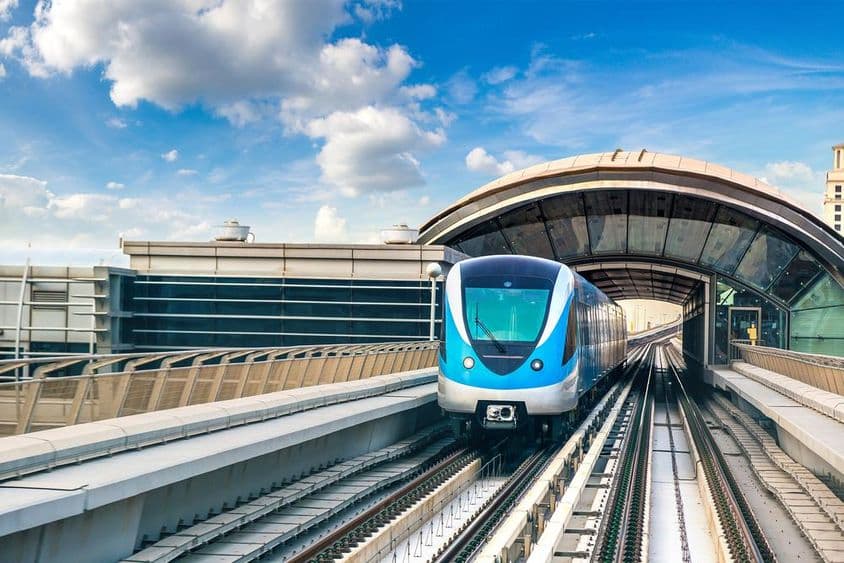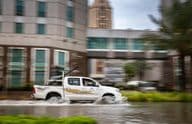Dubai Metro's Impact On Urban Life

Dubai Metro: a living example of future urban transportation
Launched in 2009, Dubai Metro has played a defining role in the urban life of the emirate ever since. It is not just a railway system, but also a symbol of innovation, sustainability, and social cohesion. Anyone who has spent even a single day in Dubai can easily experience the comfortable, reliable, and clean transportation option the metro provides—especially during the scorching summer months, when the cool, air-conditioned trains offer a real refuge.
More Than Just Transportation
Today, Dubai Metro has become much more than a simple network of lines. It has become part of the daily routine for residents, whether for commuting to work, school, or shopping. Traveling by metro is predictable and seamless, which not only increases the planning capability of urban transportation but also reduces car usage, thus contributing to environmental protection.
The system's reliability is exemplary, with trains arriving with minute precision, connecting major hubs such as financial districts, shopping malls, tourist attractions, and residential areas. Thanks to smartly designed intersections, the metro easily integrates with other transportation forms, offering a true multimodal network for passengers.
The Human Side: Community and Respect
Behind the Dubai Metro, operated by the RTA (Roads and Transport Authority), stands a large, well-organized team. More than 1,800 people work daily to ensure that travel is smooth and safe. The staff are not only responsible for technical operations but also for the quality of service, which is key to passenger experience.
A ticket vending employee, who has been with the network for six years, said that for him, the most important thing is for passengers to set off happy and calm. This approach is not unique but characteristic of the entire system—hospitality and courtesy are not only part of Arab culture but can also be felt in transportation.
An elderly couple also reported how surprised they were when they were offered seats in the metro—such attentiveness is rare these days. Such gestures show that Dubai Metro forms not only a physical but also a social bridge between different cultures and generations.
Technology and Cleanliness: Measures of Advancement
In a recently published video, Dubai's ruler, Sheikh Mohammed, showcased what an average day on the Dubai Metro network looks like. The video featured passengers from different backgrounds sharing their own experiences, while scenes depicted clean, modern stations, precisely arriving trains, and disciplined travelers. The video's moral is simple but carries a profound message: "Curious how advanced a country is? Look at its systems, cleanliness, and how people behave."
This thought applies not only to the Dubai Metro but to the entire Emirate. Regular maintenance, gleaming floors, clean walls, and glass surfaces are important not just aesthetically but also because they contribute to communal behavior patterns. In a clean environment, people are more likely to maintain order, follow rules, and care for each other.
Operations Behind the Scenes
Although the operation of Dubai Metro appears self-evident to passengers, an intricate and precisely directed system operates in the background. The coordinated work of control centers, maintenance teams, IT systems, and security services is necessary for around 850,000 people to reach their destinations daily without issues. During festive periods, such as New Year's Eve, this number often exceeds one million—the system still performs reliably even then.
Social and Environmental Impacts
The operation of Dubai Metro extends beyond convenience aspects. Since its inception, it has significantly reduced the Emirate's carbon emissions, as many choose this sustainable transportation mode over cars. This not only improves air quality but also reduces traffic congestion, especially during morning and evening peak periods.
The system further aids social mobility through its affordable ticket prices, making it possible for different social strata to access modern urban transportation. The Metro makes no distinction between its passengers—everyone receives the same service, be it a businessman, tourist, or student.
An Example for the Future
Dubai Metro is not a backward-looking, static solution but a continuously evolving system. New lines, stations, and digital services are being introduced to keep pace with the city's growth and the needs of passengers. Future expansions will make even more districts accessible, offering the metro network true full coverage.
This system is simultaneously a technological, cultural, and social innovation. Thus, Dubai Metro does not just transport people but also sets an example—how to organize a city's transportation smartly, cleanly, and humanely.
(Source: Article based on a shared video by Sheikh Mohammed bin Rashid Al Maktoum.)
If you find any errors on this page, please let us know via email.


